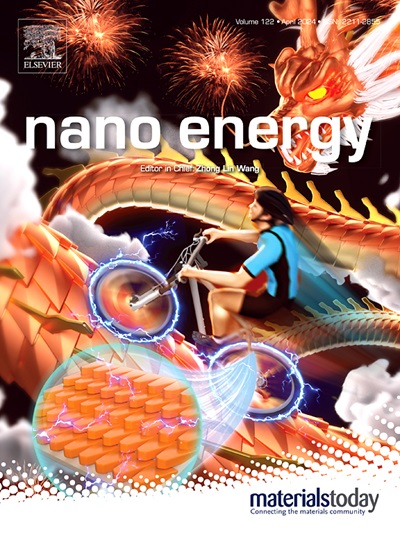Interfacial stress dissipation enabling stable solid Li metal batteries
IF 16.8
1区 材料科学
Q1 CHEMISTRY, PHYSICAL
引用次数: 0
Abstract
Li7La3Zr2O12 (LLZO) solid electrolyte with high mechanical strength and stability has promoted the revival of high energy density solid lithium (Li) metal batteries. However, its practical application is impeded by challenges such as dendrite penetration and insufficient interfacial contact. Thereinto, the mechanical failure of LLZO, caused by high localized internal stress introduced by Li deposition, contributes to cracks formation, which facilitates Li dendrite growth and penetration. Herein, a polytetrafluoroethylene (PTFE) film with unique node-fiber structure is constructed and applied as an interfacial stress dissipation layer between LLZO and Li anode, which displays an outstanding energy dissipation capability, contributing to relieve the high localized internal stress and restrain the LLZO crack formation. Meanwhile, its flexibility helps to accommodate the volume change of electrode, thus enabling a close interfacial contact with uniform Li deposition and decreased interfacial impedance. With this unique stress dissipation layer, symmetrical Li cells conduct critical current density as high as 5 mA cm−2 and deliver over 2000 h lifespan at 0.2 mA cm−2 current density, while its modified full batteries also exhibit superior electrochemical performance.

使固体锂金属电池稳定的界面应力耗散
Li7La3Zr2O12 (LLZO)固体电解质具有较高的机械强度和稳定性,促进了高能量密度固体锂金属电池的复兴。然而,其实际应用受到枝晶渗透和界面接触不足等挑战的阻碍。其中,由于Li沉积引起的高局部内应力导致LLZO的机械破坏,导致裂纹的形成,有利于Li枝晶的生长和渗透。本文构建了一种具有独特节点-纤维结构的聚四氟乙烯(PTFE)薄膜作为LLZO与Li阳极之间的界面应力耗散层,该薄膜具有优异的能量耗散能力,有助于缓解LLZO的高局部内应力,抑制LLZO裂纹的形成。同时,其灵活性有助于适应电极的体积变化,从而使界面接触紧密,Li沉积均匀,界面阻抗降低。利用这种独特的应力耗散层,对称锂电池的临界电流密度高达5 mA cm-2,在0.2 mA cm-2电流密度下可提供超过2000小时的寿命,同时其改良的全电池也表现出优越的电化学性能。
本文章由计算机程序翻译,如有差异,请以英文原文为准。
求助全文
约1分钟内获得全文
求助全文
来源期刊

Nano Energy
CHEMISTRY, PHYSICAL-NANOSCIENCE & NANOTECHNOLOGY
CiteScore
30.30
自引率
7.40%
发文量
1207
审稿时长
23 days
期刊介绍:
Nano Energy is a multidisciplinary, rapid-publication forum of original peer-reviewed contributions on the science and engineering of nanomaterials and nanodevices used in all forms of energy harvesting, conversion, storage, utilization and policy. Through its mixture of articles, reviews, communications, research news, and information on key developments, Nano Energy provides a comprehensive coverage of this exciting and dynamic field which joins nanoscience and nanotechnology with energy science. The journal is relevant to all those who are interested in nanomaterials solutions to the energy problem.
Nano Energy publishes original experimental and theoretical research on all aspects of energy-related research which utilizes nanomaterials and nanotechnology. Manuscripts of four types are considered: review articles which inform readers of the latest research and advances in energy science; rapid communications which feature exciting research breakthroughs in the field; full-length articles which report comprehensive research developments; and news and opinions which comment on topical issues or express views on the developments in related fields.
 求助内容:
求助内容: 应助结果提醒方式:
应助结果提醒方式:


